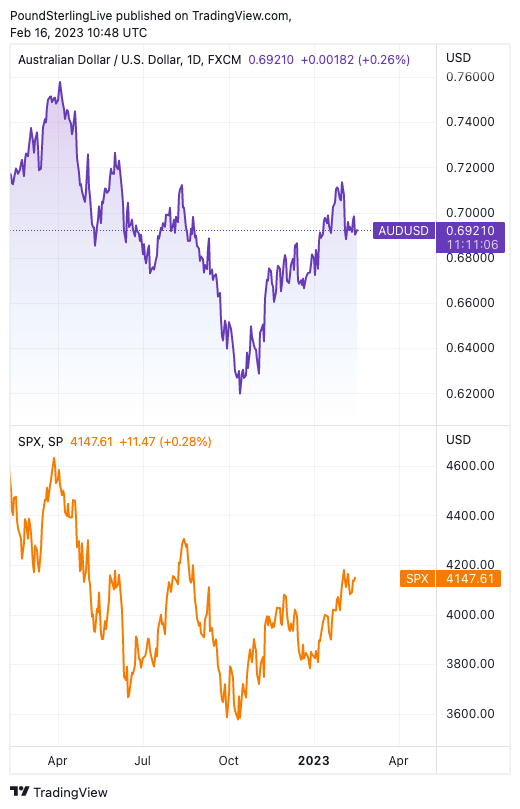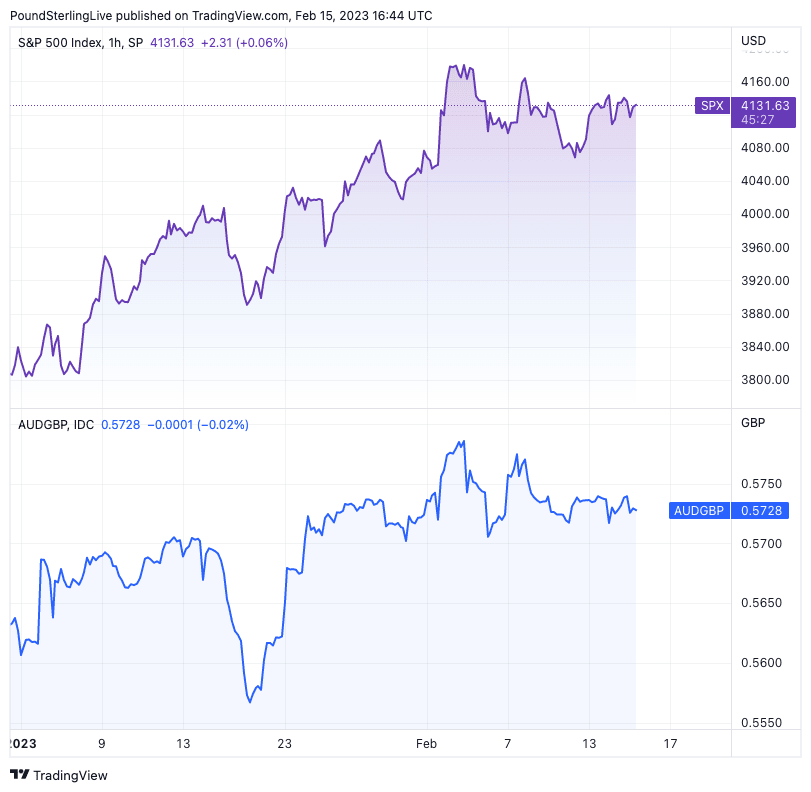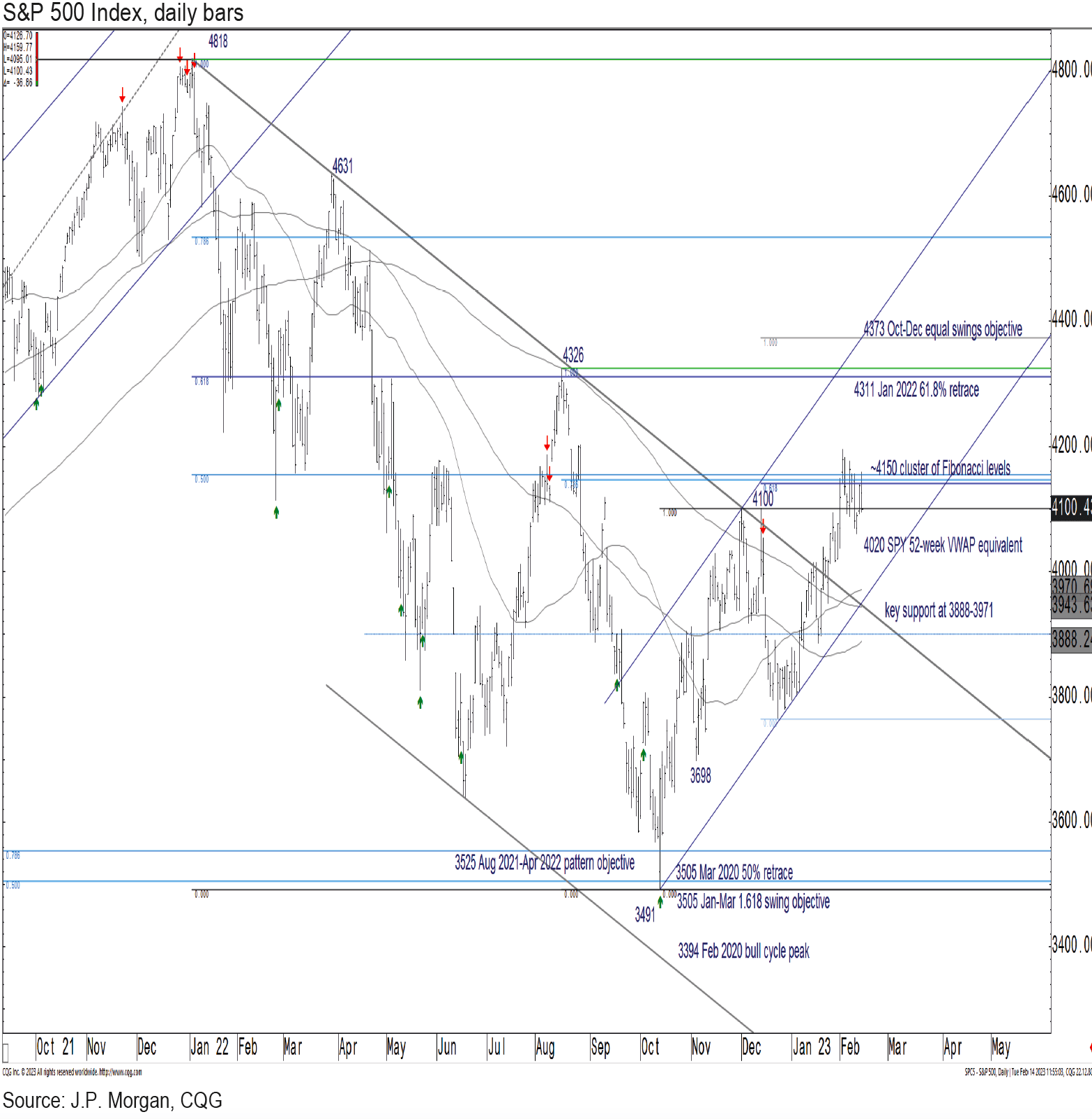Australian Dollar at Risk if JP Morgan's Bearish S&P 500 Forecast Prevails
- Written by: Gary Howes

Image © Adobe Images
The Australian Dollar could be set to experience further declines in value if the S&P 500 embarks on a more protracted decline, which is anticipated in a new study conducted by JP Morgan.
Technical analysts at the Wall Street bank say the S&P 500 could be set to experience further losses as their research, "points to limited upside and an increased risk for a bearish repricing in the weeks ahead."
"On the downside, bears would gain material traction with a break below the 3888-3971 cluster of trend lines, moving averages, and CTA momentum signal levels," says Jason Hunter, Technical Market Strategist at JP Morgan.
What happens to the S&P 500 could determine where the Australian Dollar trends over the coming weeks and months, against both the Pound and Dollar.
This is because the Australian Dollar has a 'high beta' to equity markets as it tends to appreciate when the global economy is expanding and foreign buyers are snapping up Australian industrial commodity output.
Above: AUD/USD has a strong correlation with the S&P 500.
This characteristic means that Aussie has a high correlation with the S&P 500, often considered the benchmark for global investor sentiment owing to its breadth.
The relationship is particularly evidenced in the AUD/USD exchange rate (see above), however, it even shows up against the Pound.
The below chart shows the S&P 500's performance in 2023 and that of AUD/GBP, showing a close correlation:
Above: AUD/GBP and S&P 500: the correlation has strengthened again of late. Consider setting a free FX rate alert here to better time your payment requirements.
The relationship has strengthened in 2023 as the effects of the idiosyncratic shock to the Pound posed by previous Prime Minister Liz Truss' mini-budget debacle are washed out of the system.
The charts reveal the S&P 500 Index stalled at key resistance in the 4100s in late January, and according to a technical analysis conducted by the team at JP Morgan this could herald a turn lower.
"We continue to believe the market will carve out a short- to medium-term top near current levels," says Hunter. If this is correct the Aussie Dollar might have peaked for now against the Dollar and Pound.
Compare GBP to AUD Exchange Rates
Find out how much you could save on your pound to Australian dollar transfer
Potential saving vs high street banks:
A$48.75
Free • No obligation • Takes 2 minutes
How low might the S&P 500 fall if key supports give way?
"On the downside, bears would gain material traction with a break below the 3888-3971 cluster of trend lines, moving averages, and CTA momentum signal levels," says Hunter.
"We continue to believe the index can retest the 4Q22 bottom and key support levels surrounding 3500 later this quarter, which has the potential to mark the trough for the current bear cycle," he adds.
Given the correlation between AUD/USD and the S&P 500 remains strong a fall to 3500 implies an AUD/USD rate of around 0.62.
Because the correlation between AUD/GBP and the S&P 500 has only reestablished itself since December, calling levels is more difficult.
Nevertheless, if the index does decline to 3500 the AUD/GBP exchange rate will have peaked near-term and a retreat towards 0.54 - the December lows - could be in order.
This would equate to a GBP/AUD exchange rate recovery to 1.85, a relatively conservative target, if the correlation has indeed strengthened, and holds.
Breaking it Down: Why the S&P 500 Can Go Lower
According to analysis from JP Morgan's technical strategists:
- Cyclical stocks led the S&P 500 advance in the first two weeks of the year
- Associated with a China reopening
- Duration-sensitive groups and heavily shorted baskets quickly took over and powered the advance in the second half of the month
- Duration, cyclicals and correlated markets in other asset classes now appear expensive on JP Morgan's regression model
- Defensive sectors 0.5-1.0 standard deviations cheap on the same model
- These market internals bolster an argument that points to the limited upside and an increased risk for a bearish repricing in the weeks ahead
Compare GBP to AUD Exchange Rates
Find out how much you could save on your pound to Australian dollar transfer
Potential saving vs high street banks:
A$48.75
Free • No obligation • Takes 2 minutes







